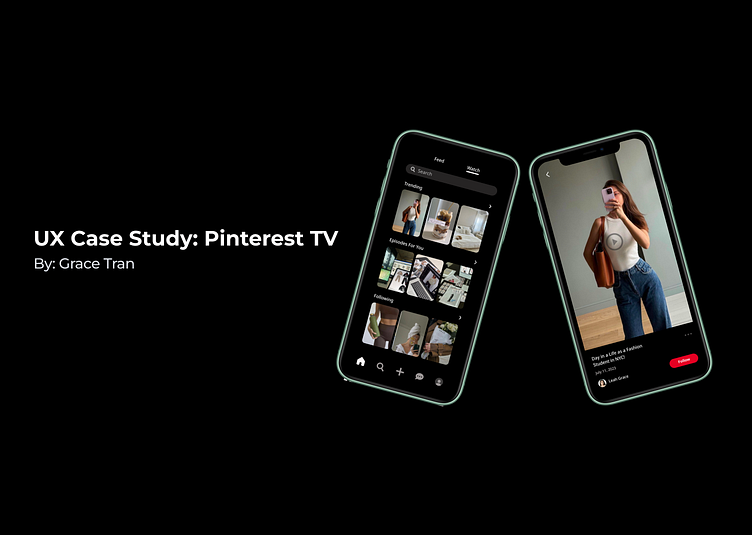Pinterest TV: UX Case Study
Hi, thanks for stopping by!
This was my first UX personal project, and you will see most of my shots below of how I went through the design process! Please feel free to visit this project on my website Grace Tran | Portfolio (readymag.com)
Information Hierarchy
Design Iteration: Watch Page
After iterating the design for the watch page, I chose Frame 3 because:
Following the Principle of Least Astonishment, adding the watch button at the top instead of adding it to the navigation bar minimizes disrupting their established navigation patterns while providing easy access to the feature.
Having all three sections in one frame facilitates navigation and reduces cognitive load on the user
Vertical video cards align with the user's natural viewing behavior on mobile devices
Design Iteration: Page Sections
After iterating through the section pages (trending, episodes for you, following), I chose Frame 4 for the final design because:
Since the watch page already categorizes videos by sections, displaying videos individually on the section pages reduces the need to return to more category pages, producing a more fluid browsing experience for users
Following Hick's Law, using a Search Bar and a Filter button can allow users to directly input what category of videos they want to watch, reducing decision time.
Design Iteration: Interaction Buttons
After iterating through the interaction buttons, I chose Frame 3 because:
Keeping the same layout for interacting with videos to interacting with pins keeps the UI design consistent within the platform.
High-Fidelity Prototyping
Pinterest TV: Demo
Results and Feedback
Improved Accessibility
This redesign led to a remarkable 91% increase in accessibility rates. This indicates a significant enhancement in user access to the feature compared to the previous design
Efficiency Gains
Users were able to access the feature in less time with the redesigned interface. On average, it took 91% less time for users to reach the desired feature compared to the old design. This signifies a notable improvement in user efficiency and task completion speed












